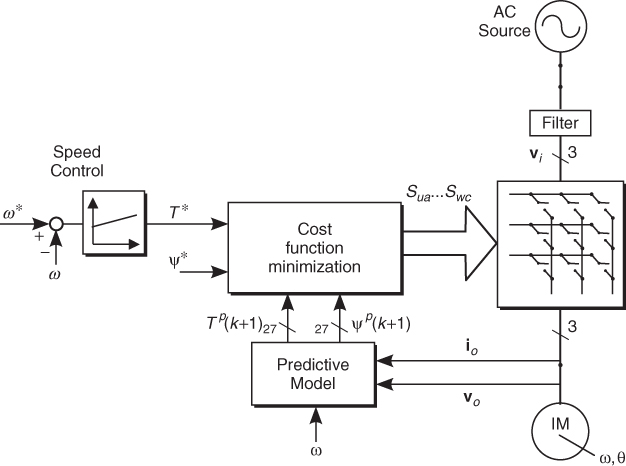8.5 Predictive Torque Control of an Induction Machine Fed by a Matrix Converter
The same PTC scheme presented in the previous section can be applied if the machine is fed by another type of converter. This section presents the application of PTC for a matrix converter-fed induction machine. The control scheme remains the same, using the same machine equations for predictions and the same cost function. The main difference is the number of possible actuations that in the case of a matrix converter is 27 switching states, instead of the 8 switching states available in a three-phase inverter. By considering the specific requirements of the matrix converter, the control of the input reactive power can be included in the control scheme.
8.5.1 Torque and Flux Control
The PTC scheme for the matrix converter is shown in Figure 8.8. An external speed control loop generates the torque reference for the predictive controller. The model of the machine is used for estimating the stator and rotor flux based on current and speed measurements. The model is also used for calculating predictions of the torque and stator flux for the 27 switching states available in the matrix converter. The switching state that minimizes the cost function is selected and applied in the matrix converter.
Figure 8.8 PTC for a matrix converter

The cost function considers the torque and flux errors, and is same as ...
Get Predictive Control of Power Converters and Electrical Drives now with the O’Reilly learning platform.
O’Reilly members experience books, live events, courses curated by job role, and more from O’Reilly and nearly 200 top publishers.

